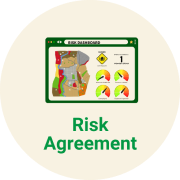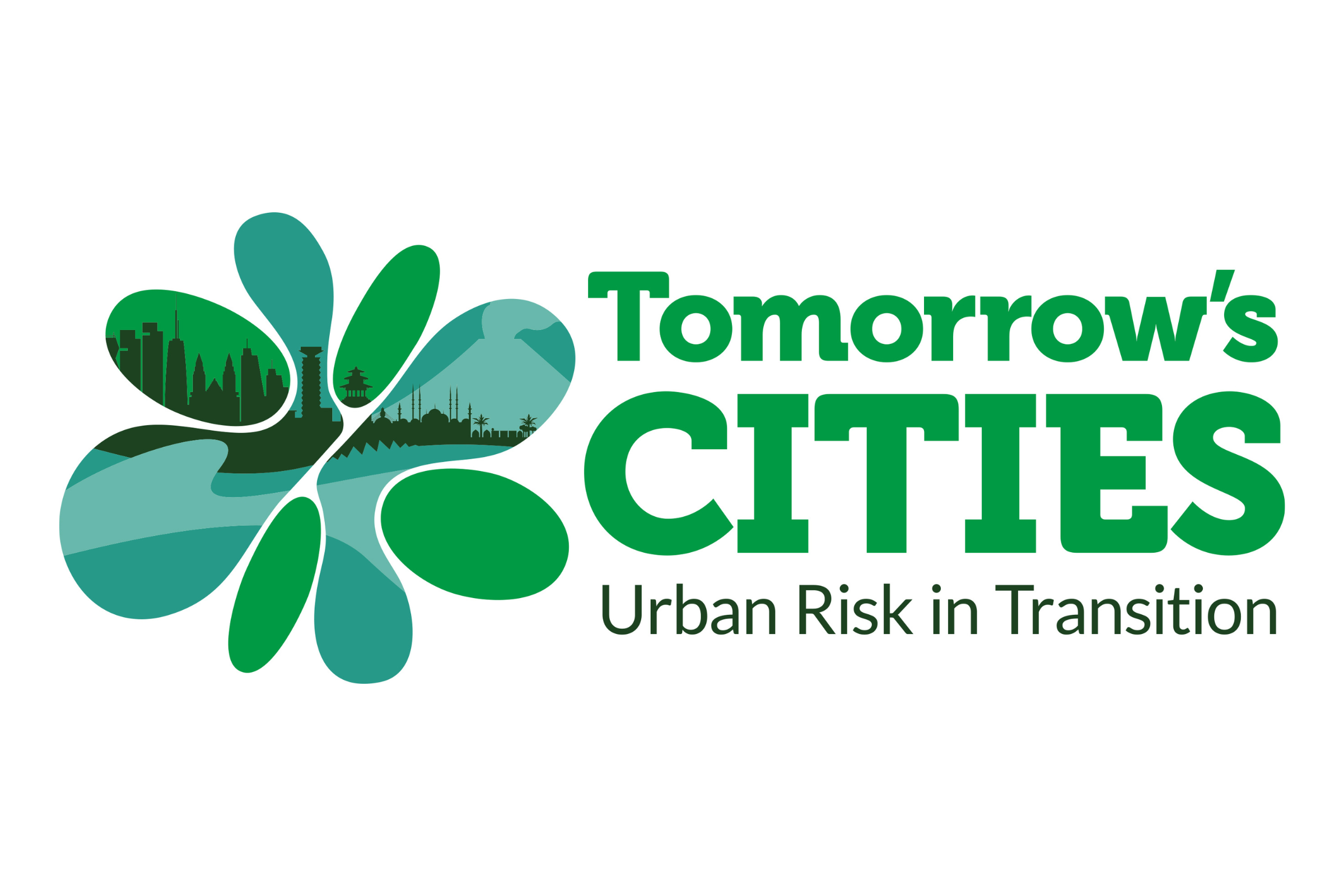
- Close

Risk Agreement
Exploring together how urban planning can mitigate or exacerbate disaster risks.
Tomorrow’s Cities Risk Agreement approach encompasses a series of activities that empower participants to evaluate Urban Scenarios derived from Future Visioning after they have been subjected to the multi-hazard simulations conducted in the Hazard & Impact Modelling component of the TCDSE. However, appraising such modelled results might be challenging.
To overcome that, the impact of hazards on each group’s Urban Scenario is communicated through a workshop that makes use of an interactive risk dashboard.
The objective of these activities is to assess how specific decisions can lead to trade-offs and co-benefits between desired development outcomes (e.g. equitable access to health care facilities) and risk reduction.
Risk Agreement empowers the different groups to evaluate various Urban Scenarios in light of refined future multi-hazard simulations.
Risk Dashboard showing how hazards impact the Urban Scenarios in Nablus, Palestine
The Risk Agreement activities, conducted in group, tackle the following questions:
- [drivers of impacts] Why is your Urban Scenario impacted?
- [potential revisions] How to reduce these impacts?
- [implementation challenges] How realistic are the revisions to the Urban Scenarios?
The process starts with the community groups participating to a “tutorial phase” in which the key concepts of our risk modelling approach are unpacked through specific activities involving the risk dashboard. The participants can then use specific Impact Metrics to evaluate how risk is distributed geographically in their Urban Scenario, for each modelled hazard scenario. They also evaluate the risk performance of low-income areas, for an assessment of risk in relation to equity.
Overall, the process allows participants to identify and discuss the hazard, exposure and vulnerability features of the Urban Scenarios under consideration, which may contribute to different risk outcomes.
This prompts discussions on the risk drivers of each Urban Scenario, leading to proposals for revisions capable of reducing risk. Many of them, such as adjustments to building codes or height, can be tested in the risk dashboard.
Facilitated through evidence-based conversations from both social and technical perspectives, these discussions result in a set of revisions to the Urban Scenarios.
With key revisions identified, the community groups focus on the city’s governance context and on the conditions, policies and institutional framework that facilitate or hinder the implementation of their proposals. Discussions are guided by experts, including local urban planners and government officials experienced in urban planning, budgeting, policymaking, and execution.
Deploying the Risk Agreement workshop in Nablus, Palestine.
Ultimately, the list of revisions aimed at reducing risk, can be used as input for a new iteration of the TCDSE. The identified revisions may be incorporated into new digital Urban Scenarios and retested against multi-hazard events. This ongoing cycle seeks to improve the future by minimising risk, enhancing the understanding of effective governance methods, and ultimately supporting evidence-based decision-making.
The process empowers different actors and social groups to actively participate in risk-informed decision making for the urban space, directly addressing the need for local involvement in disaster risk reduction set out in numerous policy documents
Outputs
- Comprehensive risk assessments of each urban scenario, integrating objectively quantified impact metrics and local knowledges.
- Compilation of desired revisions for each urban scenario with three priority actions.
- Enumeration of societal, governmental, and environmental challenges associated with the proposed revisions.
- For each challenge, potential solutions, responsible actors, and their associated timeframes.
Deploying the Risk Agreement workshop in Nablus, Palestine.
Rich lessons emerge from discussions that integrate science-based assessments with local knowledges.
Following the Risk Agreement, cities achieve:
- Enhanced community understanding of the fundamental components of risk, as quantified for the Urban Scenario of each group.
- Articulated statements from participant groups outlining strategies for risk reduction tailored to each Urban Scenario.
- Comprehensive group statements addressing the governmental, societal, and environmental challenges linked to the implementation of risk reduction measures, along with proposed solutions.
Science-based, agreed upon future risk assessments, combined with local knowledges of implementation constraints (social, political, environmental), lead to solutions and lessons that are context-sensitive and useful for the present.
This opens spaces for a discussion on how to change decision making cultures, to accommodate visions considering assessed risks. This is how the TCDSE transitions to its next component, Implementation Pathways.
- Implementation Pathways, delivering detailed action plans to enable collaborative, risk-informed, city shaping.
- Go To Next Stage

